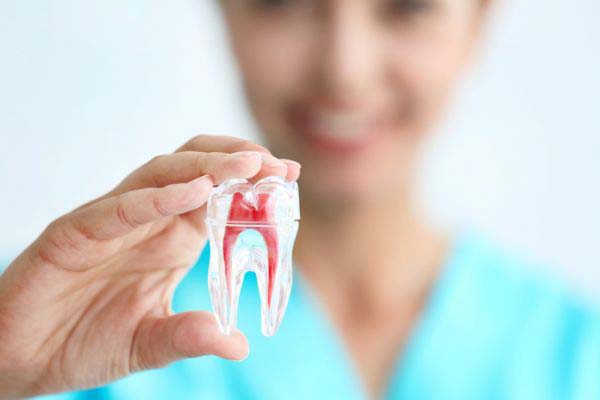
What is root canal therapy?
Root canal therapy, also known as root canal treatment or endodontic therapy is a dental procedure to eliminate infection and protect a tooth from microbial infection. Simply put, Root canal treatment is used to prevent dental pain and protect your teeth. When one undergoes a root canal treatment, the infected pulp is removed at first. Then, the inside of the tooth is carefully cleaned to prevent germs and further infection.
When do you need endodontic therapy?
Root canals are used to seal the cracked tooth from a cavity, a tooth injury, or earlier filling. When you notice a sensitivity to hot or cold sensations or have severe tooth decay, this may be a sign that you need root canal therapy. Here are some other issues you may notice:
- Sharp pain while chewing or nibbling
- Swelling of the gums
- Chipped tooth
- Tooth Decay or discoloration of gums
Root canal therapy steps explained
If you are experiencing symptoms as listed above, it’s high time you need to visit a dentist. They’ll first check the infected tooth’s condition and then put up an x-ray analysis before operating the procedure. If the x-ray confirms a need for a root canal, the dentist will proceed. Here are the steps of root canal therapy explained in detail.
- Judging by the x-ray report, the dentist administers a local anesthetic to numb the sensation of the tooth. After numbing it, the dentist places a small protective sheet known as a dental dam over the area to separate the infected tooth from the other healthy teeth. Another reason for putting a dental dam is to keep the area clean and free of saliva during the procedure.
- Next, an opening in the crown of the tooth is made. After opening the crown, the infected pulp is cleaned using small instruments. After the cleaning of the pulp is done, the dentist proceeds to shape the space for filling.
- Once the cleaning and shaping are done, the endodontist fills the root canals with a biocompatible material called gutta-percha. The gutta-percha is placed with an adhesive cement to seal root canals completely. Some dentists find it useful to do a temporary filling to close the opening. The temporary filling will later be removed after restoring the tooth.
Although the procedure ends here, the work isn’t done just yet. You must return to your dentist to have a crown restoration to restore your tooth to function fully and to protect the tooth from further damage.
How much does the root canal therapy cost?
The cost can vary depending on the affected tooth and the complications regarding the procedure. For instance, root canaling on a molar tooth can cost more than the other teeth. If you have dental insurance policy done, they can provide coverage for such treatment.
Does a root canal hurt?
Usually, it doesn’t since the patients are given anesthesia to numb sensations. But once the effect of anesthesia wears off, it might cause slight discomfort to the patient for a few days. With proper medications prescribed by the dentist, the discomfort doesn’t stay long.
What to do after treatment?
After the procedure is done, follow your endodontist’s advice. These are some common instructions.
- Don’t drink too hot or cold water or any liquids immediately after the therapy
- Avoid food that is hard and requires chewing
- Brushing twice a day
- Be careful not to get food particles stuck in the area.
It is advised to get a root canal therapy done as soon as possible. Delaying or not treating the tooth can result in the spreading of the infection to other parts of the body. This can prove life-threatening. A successful root canal therapy will protect the tooth, giving it better functionality.
Our Harrisburg NC Dentist Office
To learn more about dental treatments from Icard & Strein Family Dentistry, or to schedule an appointment, call our Harrisburg, NC dental office today at 704.455.5003.



